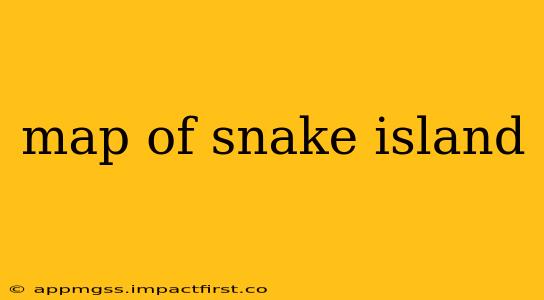Snake Island, also known as Ilha da Queimada Grande in Portuguese, is a small, roughly triangular island located off the coast of Brazil. Its infamous reputation as one of the most dangerous islands in the world stems from the incredibly high density of highly venomous golden lancehead vipers ( Bothrops insularis). While a precise, publicly available, high-resolution map detailing every inch of the island is unavailable for security and conservation reasons, we can explore what information is accessible and understand why mapping Snake Island presents unique challenges.
What Makes Mapping Snake Island Difficult?
The remote and hazardous nature of Snake Island significantly complicates mapping efforts. The dense population of venomous snakes poses a considerable threat to anyone attempting a detailed survey. This necessitates specialized equipment and highly trained personnel, making the process both expensive and risky. Furthermore, preserving the delicate ecosystem of the island requires a cautious approach to minimize human impact.
What Kind of Maps Exist?
While a detailed, street-level map of Snake Island isn't publicly available, various sources offer different representations:
-
Satellite Imagery: High-resolution satellite images provide a general overview of the island's topography, coastline, and vegetation. These images are available through services like Google Earth, offering a visual representation without the need for on-site surveys. However, the resolution may not be sufficient to pinpoint specific features.
-
Nautical Charts: These charts primarily focus on navigational aspects for ships approaching the island, indicating water depths, potential hazards, and general coastline features. They won't provide the level of detail needed for a terrestrial map.
-
Scientific Research Maps: Researchers studying the island's ecology and the golden lancehead viper population may possess more detailed maps. However, this information is often kept within research circles or protected due to the island's sensitive environment.
What Can We See on Available Maps?
Generally available maps and satellite imagery show:
- The island's overall shape and size: A roughly triangular shape with a relatively small landmass.
- The coastline: Showing variations in the shoreline and the presence of potential landing points (though access is strictly prohibited).
- Vegetation: The predominant vegetation cover, which primarily comprises forest and scrubland.
- Elevation: A general sense of the island's height and potential slopes, although precise elevation data may be limited.
Can I Find a Detailed Map of Snake Island Online?
Unfortunately, no detailed, publicly accessible map of Snake Island exists for the reasons already discussed. Any purported "detailed maps" found online should be treated with extreme caution, as they are likely inaccurate or misleading. Attempting to access Snake Island without authorization is illegal and extremely dangerous.
Are there any other islands similar to Snake Island?
While Snake Island's unique density of venomous snakes sets it apart, other islands globally have unique ecological features that make them equally intriguing and, in some cases, dangerous. These might include islands with unique endemic species or those impacted by volcanic activity or other natural phenomena. However, it’s crucial to remember that unauthorized access to these areas is also typically illegal and risky.
Why is access to Snake Island restricted?
Access to Snake Island is strictly restricted primarily due to the extremely high density of highly venomous golden lancehead vipers. The risk to human life is substantial, making unauthorized access both illegal and incredibly dangerous. Conservation efforts are also central to restricting access, aiming to protect the unique ecosystem and the endangered viper population itself.
This article provides an overview of the available information regarding Snake Island maps. Remember, respecting the island's sensitive ecosystem and adhering to access restrictions is crucial for preserving this unique environment. Always rely on official and credible sources for information.
